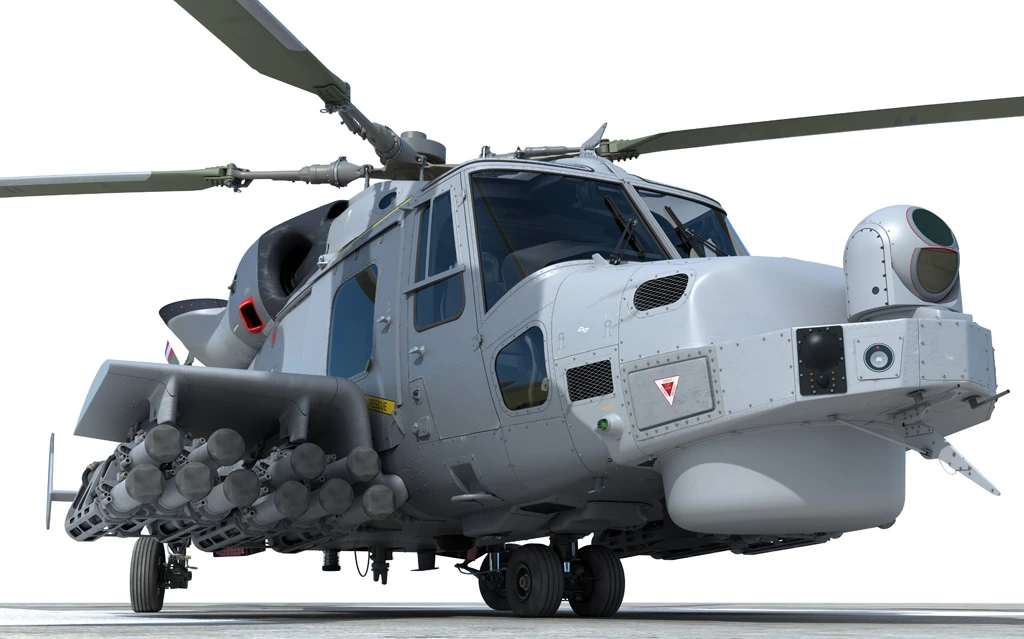Defense companies Leonardo and Thales have successfully tested the Martlet Lightweight Multirole Missile (LMM). The Thales-built missile being developed for the Royal Navy was fired during air trials from April 27 to May 7, 2020 from a Leonardo AW159 Wildcat helicopter as part of the UK Ministry of Defence's Future Anti-Surface Guided Weapon (FASGW) program.
Under development since 2014, the Martlet is a two-stage, solid-propellant light missile for maritime, surface-to-surface, surface-to-air, air-to-air missions. Weighing only 13 kg (29 lb), it has an operational range of over 6 km (4 mi) at a speed in excess of Mach 1.5 (1,790 km/h, 1,112 mph) and can be fired from ground and naval platforms as well as the Wildcat multi-role combat helicopter before homing in on its target using a multi-role laser guidance system.
For the recent tests, the Martel was mounted on the twin-engine Wildcat via the new Leonardo Weapon Wing, while its airborne laser guidance unit was integrated into the helicopter's sensor, displays and avionics systems. According to Thales, the weapon wing can carry up to 10 Martlets or two Sea Venom missiles. In addition, the wing provides more lift in forward horizontal flight, taking some of the burden off the main rotor.
The purpose of the Martlet is to allow the Royal Navy to engage small, fast-moving targets that generate small thermal and radar signatures, such as a small boat, UAV, or other helicopters, that might get lost in the electromagnetic clutter of the maritime environment. The missile is expected to enter service in 2024.

"The successful live firings of the Thales LMM Martlet from the AW159 Wildcat is a key milestone in the program, delivering a significant step-change in capability for the platform," says Philip McBride, General Manager, Integrated Airspace-protection Systems, Thales UK. "LMM Martlet will ensure that the Wildcat has the best-in-class offensive capability to protect HMS Queen Elizabeth and her task group during her maiden operational deployment next year. With each platform capable of carrying up to 20 Martlet, the Wildcats deployed with the task group will be a significant deterrent to anyone wishing to interfere with UK interests."
The video below shows a Wildcat firing the Martlet missile.
Source: Thales










